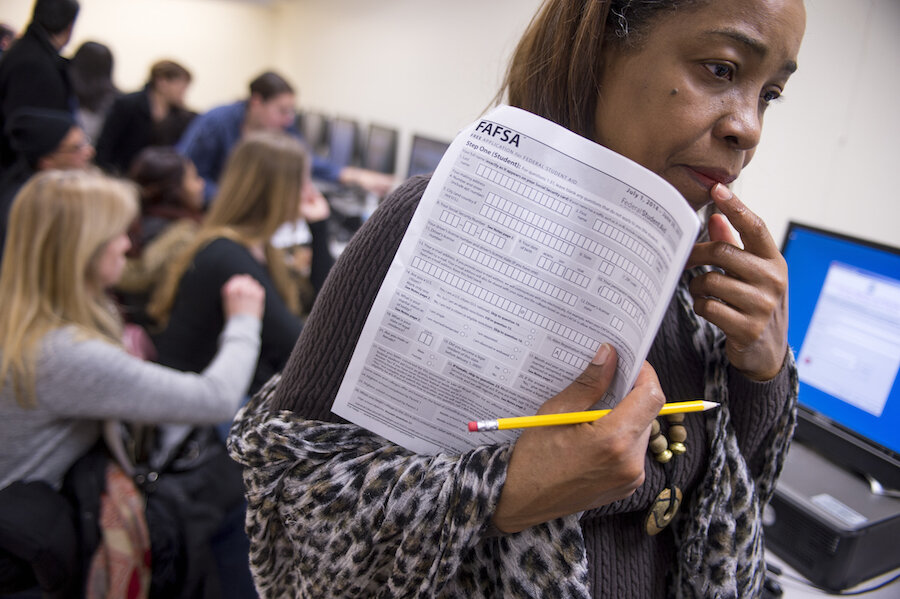Do financial aid policies make paying for college harder for some?
Loading...
College is getting more expensive – especially for low income students.
On Tuesday, a study released findings that low income students face significant challenges meeting the financial requirements to attend many private universities and an increasing number of public universities, despite financial aid.
The study was the third report in a multi-year series from The New America Foundation’s Education Policy Program. Together, the studies suggest the issue is getting worse.
What is to blame? A systematic shift in how private and public institutions are leveraging financial aid money, according to New America.
“In the face of steep state budget cuts over the past decade, public colleges are increasingly adopting the ‘enrollment management’ tactics of their private-college counterparts – to the detriment of low-income and working-class students alike,” the report states.
The study analyzed the average net price that low-income students paid in tuition in 2013-2014. The data came from the US Department of Education and ranged over 1,400 four-year public and private colleges.
The study found that public and private universities are using the available money for financial aid and focusing it into so-called merit-aid packages to attract students from more affluent areas, according to the study. This practice has a negative effect of reducing the opportunity for low-income students, according to New America.
Ninety-four percent of private colleges examined charge the lowest-income students an average net price over $10,000, 72 percent charge over $15,000, and 30 percent charge over $20,000
Forty-seven percent of public four-year colleges and universities, charge the most financially needy in-state students an average net price over $10,000
Some colleges defend the practice. Muhlenberg College, which was cited in the study, has a page, called The Real Deal on Financial Aid, that openly discusses the college's use of financial aid to target students with higher grades.
“While the new world of preferential packaging may not seem as 'kind and gentle' as the process was in years past, it does have its good points. Perhaps the most important one is that the right students and the right colleges may be finding each other more often,” the college states.
But the study maintains that the practice places too much reliance on Pell and other Federal grants to pick up the slack, rather than relying on what financial aid was initially intended for: to “serve as engines of opportunity, rather than as perpetuators of inequality.”
Federal programs aimed at lowering the barrier for low-incomes students have faced their own criticism in the past. Many have said the Free Application for Federal Student Aid (FAFSA) is too complicated for many students and families. Around two million students who would have qualified for federal aid in 2014 to 2015 did not file, according to a White House press release.
The federal government has taken steps to improve the process, Jessica Mendoza of The Christian Science Monitor reported. Last year, the Obama administration announced a partial reform for the system that would push back the date of when students first receive access to FAFSA from January to October, allowing more time, and reduce the amount of paperwork students have to file.
“Getting the form filled out earlier will make a real difference for students who think they can’t afford college,” Education Secretary Arne Duncan said in a 2015 town hall meeting in Iowa. “We believe literally hundreds of thousands of additional students will actually gain access to critical student aid each year.”








